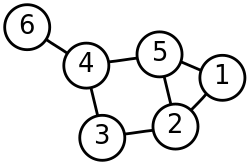It is easy to run down
television, but aren't we overdoing its impact on children?
Does it convey a dumbing
down if children between three and four can recall names of brands and TV
channels, but do not recognise a sparrow?
TOI reporting on the survey
conducted by Podar Institute across a few schools in Mumbai started with this
statement:
“Parents often pride themselves on their children’s skills but a recent survey might leave many embarrassed."
Many parents these days push
their children on TV reality shows. One might question some of them, and even
the intent to be in the public eye, but it is essentially to showcase the
talent they think their kids possess.
Before such shows, children
invariably were asked to perform before visitors - “Beta, recite that
poem...show aunty that dance...tell uncle how you will save your sister with
karate chops..." (How many children are asked to show skills in
mathematics or history?) TV shows have given a wider platform to these same
performances. While I do get pretty disgusted watching people so young make
adult moves, tell off-colour jokes, is it not a fact that in real life this would
be seen as 'older than her/his age'?
The survey sample was 2000
— 500 each from the 3/4 year and fe/male gender bracket. It also concentrated
on a fairly uniform socio-economic background. The director of the institute
observed:
“Children learn many things from watching television, especially commercials. Brands are not something parents or schools teach, but kids automatically absorb the information because it comes from a very colourful medium.”
I would extend the argument
to iconic people and events as brands. The images of Gandhi are 'colourful' —
his clothes, glasses, spinning wheel, and his quick gait. I recall a cousin
dressing up as Tagore for a fancy dress competition and another as Indira
Gandhi, much as one sees them on some reality shows. What, then, makes the
latter bad? Some kids talk about events, and although I vehemently oppose
children being used to make a point about religion or terrorism, one may
surmise that they are not unaware of things around them.
The absorption is based on
observation. If 85 per cent could name brands of chocolate, is it only due to
the onslaught of televised images? There is no doubt that a story related to
the product makes it easy to remember, but what child of an earlier generation
would not tell you about the same, and even of other products? Perhaps, if a
survey was conducted in those days, the results may not have been too
different. I clearly recall Kiss Me toffees and Cadbury's.
90% could identity
fast-food joints and names of powdered energy drinks. Is it because of the
electronic media or more access? More families are eating out and the family
dinner is about where to eat as much as what to eat. Energy drinks on TV work
in tandem with how parents force them down kids. Again, Bournvita, Horlick's
and Ovaltine have always been used to lure children to have milk.
The input has a lot to do
with availability. Tigers are exotic, so everyone was aware about them. The
reason probably only 20% could recognise sparrows is because they are not as
visible as they used to be. This is borne out by the fact that crows scored
better with 70%.
This same principal applies
to fruits. Kiwis, bananas, pears, pineapples were known; only 12% could spot
chikoos.
There is too much concern
about the influence of consumerism. Children do not think about that. If they’d
see butterflies, they’d still chase them. If we want to give the butterfly a
brand name and they recall that, it does not denude the wonder they feel for
it.
© Farzana Versey

